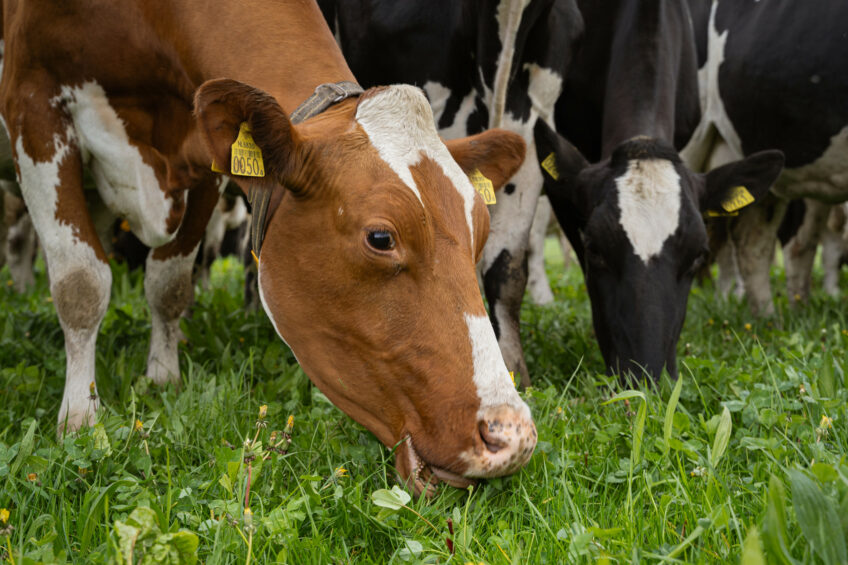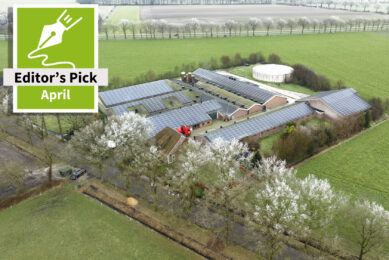For innovation in the feed sector to thrive legislative support and public trust are critical

The feed industry, like all others, must innovate to move forward. There has been a long history of innovation in the feed sector, but how do we boost it further, to the benefit of livestock and producers, but also of the public in terms of the environment, stable meat, egg and dairy product prices, and more?
Moving from regulations to guidelines would be an effective way to support development of innovative new processes and ingredients, but getting to that means we must work further to build public trust. That’s the view of Professor Emily Burton of the School of Animal, Rural and Environmental Sciences at Nottingham Trent University in England, who presented the topic ‘responsible innovation’ at the Animal Nutritional Conference of Canada this spring.
Burton defines responsible innovation as occurring when a sector becoming so responsible that regulation of that sector can stay light and agile, even moving solely to guidelines, creating an environment where further innovation can flourish rather than a heavy-handed environment where it’s stifled. In the former scenario, “regulators are increasingly willing to rapidly adapt their regulatory systems to prevent delaying innovation that is beneficial to society,” says Burton. “This also means, however, that members of that industry, including academics, give members of society the opportunity to scrutinise their assumptions, values and visions.”
The need for regulatory updates that allow more innovation in livestock feed is quite urgent, in her view.
Burton explains that many of today’s regulatory systems are based on those introduced in the 20th century, and for technologies that are very different from current innovations associated with animal feed. Regulatory compliance therefore is a potential barrier to innovation unless a new approach is established between regulators and innovators. As mentioned, part of that is improved interaction with the public.
sharing ‘good news’ stories is vital
Public trust
In Burton’s view, the feed industry must do a better job at communicating what it does, why it needs the freedom to innovate further, how it should be enabled to innovate further – and the reductions in environmental impact that past innovations have already achieved.
“I feel there’s a massive gulf between the knowledge and views of those producing animal feed, livestock and crops and consumers not involved in production,” she says. “We share most of the same values, all of us, and we want the same things but we express it differently. It’s those in food production who need to bridge that gap.”
Those in the feed and broader agriculture sector need to listen, and listen some more, to what the public’s views are, she says, but also to how they are framed. Then, those in agriculture need to articulate their views in a similar way.
In addition, sharing ‘good news’ stories is vital.
Burton points to phytase enzyme as an example. “We use it because it saves money,” she explains. “It’s cheaper than mining phosphate, but there’s such a wonderful environmental story in how it reduces phosphorus in manure and in the environment. We’ve been using it for 30 years and we still aren’t sharing it as an important story. No one outside farming cares that it saves money, but they will care that it’s good for the environment once they hear about it. It’s only recently that it’s being talked about.”
Another good news story is the broiler chicken, in and of itself a huge achievement in Burton’s view.

“The modern broiler chicken is extraordinary,” she says. “It has truly changed human health around the world in how it enables very efficient production of high-quality protein. Yes, genetics have played a large role, but so has all of the research and honing of the broiler diet. The feed is critical. These birds grow robustly on poor food, they grow incredibly fast on low amounts of high-quality food, and they have a generational turnover that’s so much faster than pigs and cows. The broiler chicken has also been completely transformative in many poorer areas of the world as well. It is rightly cited as a means of lifting people out of poverty, especially giving women in developing countries the opportunity to be entrepreneurs. Not talking about the broiler chicken is a major missed opportunity for the animal feed industry.”
How to communicate
In Burton’s view, nutritionists and others in the feed sector must be able summarise sustainability achievements in formats that can be fed into social media streams. But they must also maintain awareness of how societal needs are always changing and focus on the ongoing new opportunities to address those needs, using animal nutrition to address underpinning values rather than focusing on the (frequently incorrect) details that accompany societal messages.
“To me, it should be part of everyone’s job to understand societal views and to be able to explain their sector in that context, in the language that consumers use,” she says. “Instead, there can be quite a lot of contempt for consumers because they don’t understand livestock production. There’s a feeling of aggrievement among those that produce food that they are not appreciated or understood or respected and they end up being disrespectful to consumers. But if we have a better relationship with consumers and they don’t get all their information about livestock farming and feed from the environmental groups and the welfare groups, it will help us in so many ways and we will be more easily able to innovate further.”
She adds, “we jump through what are quite often ridiculous hoops that come from our legislators or our large restaurant or retail customers, and if we put more energy into communicating what we do and how we are reducing environmental impact and improving welfare, those crazy requirements would come up less often.”
At the same time, Burton feels that progress is being made. “People like me are being asked to talk about communication opportunities and increasing public trust again and again,” she says. “We are at the start of something positive. The interest in communicating good news stories is growing.”
Leah Wilkinson, VP of public policy and education at the American Feed Industry Association (AFIA), is also optimistic.
US perspective
Wilkinson notes that over the past several years, there has been more positive political rhetoric around innovative US animal food ingredients as a solution to climate change, food security and improved animal productivity, health and wellness.
“There is a growing recognition from the US Food and Drug Administration (FDA) and Department of Agriculture (USDA) that the US regulatory systems need to evolve with breakthroughs in animal nutrition science and technology,” she says. “This has led to a shift in not only thinking about the ways in which we can get these novel products through the regulatory system faster, but also, how we can get them into the hands of American farmers and ranchers sooner.”
While she notes that the USA lags behind other countries in its regulatory review of novel animal food ingredients with emissions-reducing, food safety and animal health and wellness benefits (with some technologies in use across Europe, Brazil, Chile, Canada and Australia but not in the USA), there was a positive development in late May. In a move that will hopefully herald more progress to come, the FDA approved a new ingredient shown to reduce greenhouse-gas emissions from dairy cattle.
New legislation
At the same time, the AFIA is currently advocating for the passage of the Innovative Feed Enhancement and Economic Development (Innovative FEED) Act (S. 1842/H.R. 6687) and the Enteric Methane Innovation Tools for Lower Emissions and Sustainable Stock (EMIT LESS) Act (S. 4056). These laws would work in tandem, says the AFIA, to facilitate more appropriate regulatory reviews of a newer class of feed ingredients and provide incentives for producers to use them once they are available on the market.
“Essentially, the Innovative FEED Act would provide the FDA with the regulatory authority it needs to review ingredients with non-nutritive benefits (e.g., microbiome, emissions reduction or food safety claims) as feed ingredients, not drugs, as they are currently,” says Wilkinson. “Without explicit direction from Congress, and in light of the US Supreme Court’s recent ruling on the ‘Chevron doctrine,’ the FDA will continue to regulate these ingredients as animal drugs, while potentially exempting the ingredient from certain parts of the animal drug approval process. With passage of the Innovative FEED Act, the AFIA hopes Congress will direct the FDA to usher in the necessary policy changes that would provide animal food innovators with the certainty to get these products regulated as feed ingredients and make the USA an attractive market to do business.”
Similarly, with EMIT LESS, AFIA aims to work with the USDA to expand research on these tools and incentivise farmers to adopt emissions-reducing practices on farms through existing conservation programmes.
Wilkinson adds that for the USA to realise the benefits of these bills, once passed, “we recognise that the federal agencies may need support via appropriations to ensure they have the proper staffing and resources to carry out new duties. We work very closely with the agencies to understand their resource needs and do our best to advocate for additional funding, when needed.”











